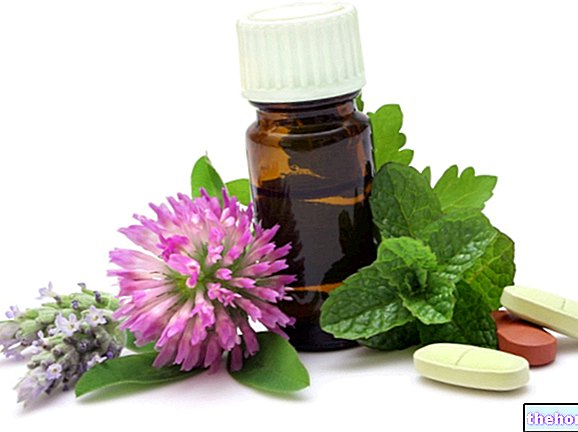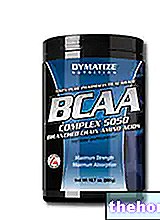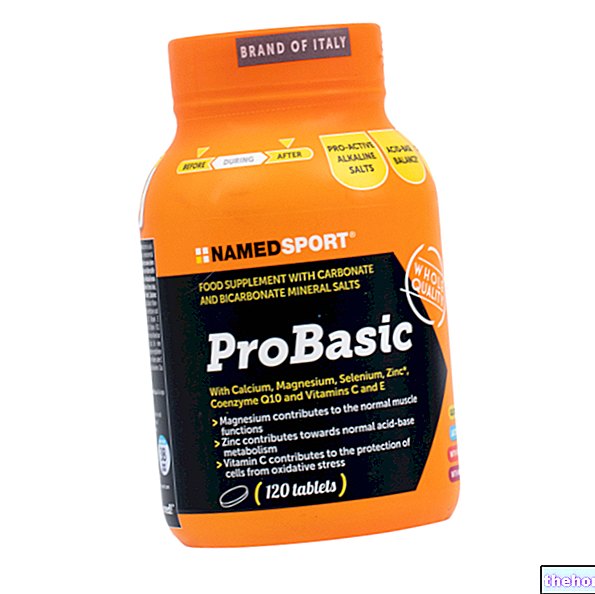What is agmatine?
Agmatine is a derivative of the amino acid arginine. It is a "biogenic amine also produced by neurons of the central nervous system (brain) and stored in the related synaptic vesicles, where it is stored for uptake, released by depolarization and subsequently inactivated by the agmatinase" enzyme. In the human brain, agmatine appears to act as a neuromodulator / neurotransmitter by binding to various receptor targets; in experimental models it has also shown interesting neuroprotective effects.
Agmatine is obtained from decarboxylation of arginine by the enzyme arginine-decarboxylase, but its synthesis is NOT aimed at itself since it is an intermediate of polyamines (cell growth factors). The same reaction is carried out by the intestinal bacterial flora on food residues containing arginine, whose biotransformation into agmatine (in turn converted into putrescine) contributes to giving the faeces the characteristic and unpleasant odor.

Functions
Agmatine is a biological regulator and acts as a real neurotransmitter / neuromodulator; the functions of agmatine are (or rather, SHOULD BE) from:
- * BLOCK (ANTAGONISM) of post-synaptic receptors for NMDA (N-Methyl-D-Aspartate), whose physiological agonist is glutamic acid; the stimulation of these receptors has the effect of increasing the entry of sodium and especially calcium inside the neurons, which is followed by the activation of various processes:
- activation of the nitroxide synthetase which produces the "nitric oxide (NO) as responsible for the synthesis of GMP-cyclic in nerve endings; therefore, agmatine inhibits the synthesis of nitric oxide, but despite this it still seems to have vasodilatory and hypotensive effects
- activation of a protein kinase C which regulates the blockage of magnesium (Mg).
- activation of the "ornithine-decarboxylase which promotes the synthesis of polyamines enhancing the influence of calcium (Ca)
- activation of phospholipase A2 which leads to an enhancement of presynaptic release and an inhibition of glial uptake of "glutamic acid (exciting neurotransmitter and precursor of GABA or γ-aminobutyric acid; the latter is a regulator of neuronal excitability and is directly involved in the maintenance of muscle tone).
- Binding the receptors α2-adrenergic: their activation determines a decrease in the production of noradrenaline (negative feedback) and in the secretion of insulin at the pancreatic level. Nevertheless, the overall effect of agmatine seems to favor the release of catecholamines from chromaffin andrenergic cells (Li et al., 1994), and insulin from pancreatic B-cells (Sener et al., 1989)
- Bind imidazoline and nicotinic receptors
- Promote the release of peptide hormones such as: GH (somatotropin - anabolic hormone) and LH (luteotropin - stimulating the release of testosterone - anabolic hormone).
- Similarly to nitric acid, it causes vasodilation and increases the glomerular filtration rate; the researchers have in fact noted that the infusion of arginine causes an increase in glomerular filtration even when nitric oxide synthetase is inhibited; this effect, however, is not occurs when the enzyme arginine decarboxylase is inhibited.
Agmatine and arginine supplements
Agmatine is therefore an amino acid derivative of arginine, which for its real or presumed functions is used as an ingredient in some arginine-based products aimed at increasing endothelial nitric oxide (ON) (read the dedicated article: Nitric oxide).
The goal of adding agmatine to promote nitric oxide synthesis is to block the ENDOGENOUS transformation of arginine into agmatine, consequently implementing the bioavailability of arginine for the production of nitric oxide..
In fact, the arginine decarboxylase enzyme is inhibited by calcium ions and polyamines, therefore agmatine represents a feedback inhibitor of this enzyme (an effect necessary to avoid an excessive accumulation of agmatine in the synthesis site).
According to this theory, the significant presence of exogenous agmatine would affect the metabolic destination of arginine, directing it more towards the production of nitric oxide rather than its conversion into endogenous agmatine.
Furthermore, agmatine is used for its alleged anti-depressant activity (Zomkowski et al., 2002; Taksande et al., 2009), anti-pain (Onal et al., 2004), anxiolytic (Lavinsky et al., 2003), anticonvulsant (Bence et al., 2003), anti-proliferative (Isome et al., 2007), neuroprotective (Olmos et al., 1999), facilitating spatial memory (Liu and Bergin, 2009) and stimulating the secretion of insulin and other anabolic hormones (GH and Testosterone). Often, in informative articles to push the related commercial products, all these presumed beneficial effects are enhanced and fed to the reader without the slightest criticality, failing to underline that these are still preliminary evidence.
Side effects
Agmatine is a molecule that is still little known and studied; no side effects related to its intake are known but it is well known that arginine supplements (in which agmatine is present) are potentially allergenic (symptoms: respiratory complications, skin rashes , burning and itching). In mice, agmatine has been shown to increase caloric intake and dietary preference for carbohydrates in satiated rats (Prasad and Prasad, 1996); this could facilitate an undesired increase in appetite, hence weight, in the user.
For greater safety, before taking supplements with agmatine, consult your doctor and check for any biochemical interaction with the drugs used for any concomitant therapies.
















.jpg)











